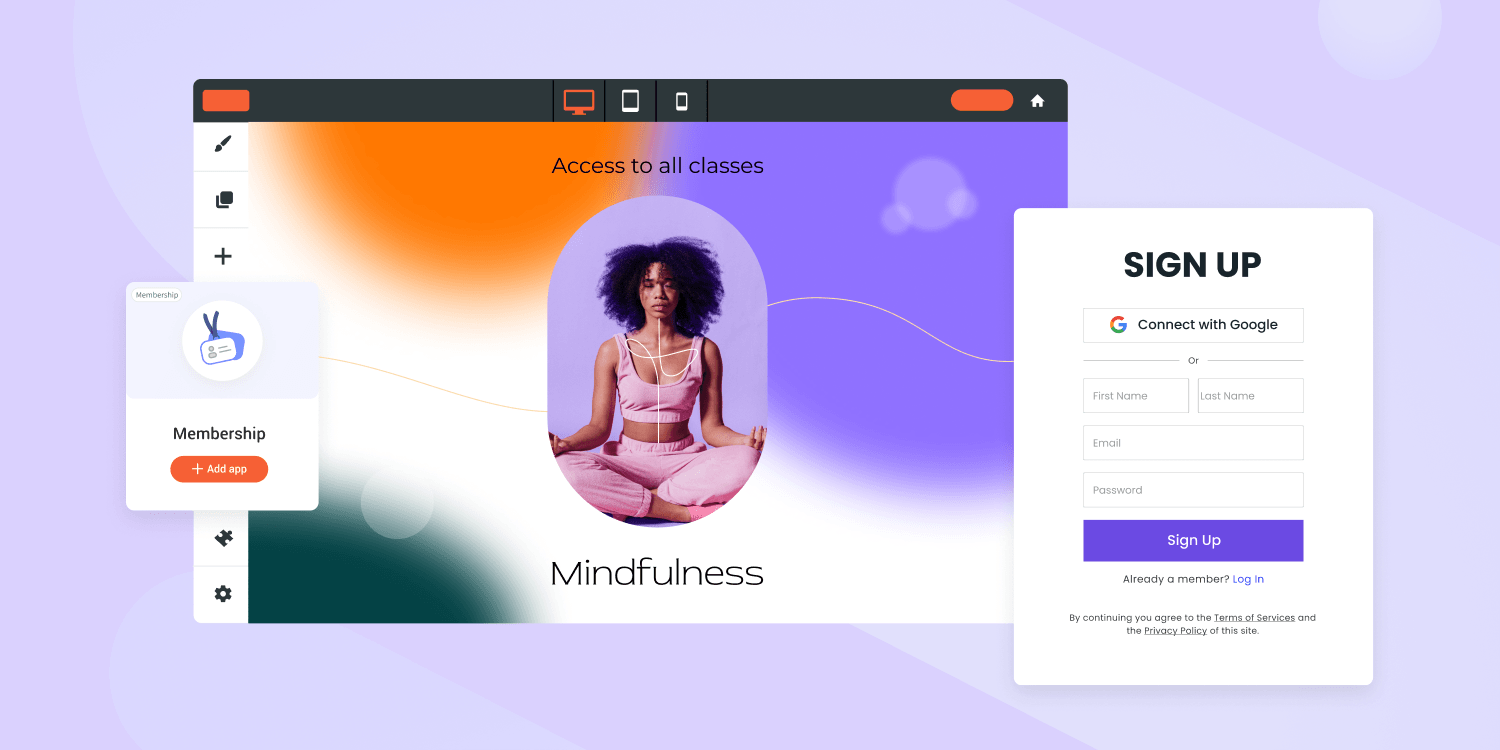Durante la pandemia, se produjo un aumento sustancial de las ventas de áreas de membresía, es decir, sitios web basados en la suscripción.
La gente busca noticias, entretenimiento, contenidos educativos y está dispuesta a pagar por ellos. Tomemos como ejemplo a “Creators Economy” (Economía de los Creadores de contenido), que
creció hasta los 100.000 millones de dólares en 2021 con la ayuda de diversas herramientas de monetización y suscripciones.
Pero un área de miembros puede ser útil para otros actores más allá de los creadores individuales y las grandes corporaciones mediáticas.
Un
área de miembros es una forma estupenda de crear comunidades y gestionar contenidos dedicados y generar nuevos contactos para las pequeñas y medianas empresas que quieren lanzar o renovar su negocio en línea después del Covid.
En este artículo, te guiaremos sobre cómo añadir áreas de miembros a tu oferta y llegar a nuevos clientes de PYMES en tan solo unos sencillos pasos.
¿QUÉ ES UN ÁREA DE MIEMBROS?
Las áreas de suscripción para miembros permiten que los clientes ofrezcan contenidos exclusivos a sus miembros registrados, a los que solo se puede acceder con un nombre de usuario. Hay diferentes tipos de afiliaciones, entre ellas:
- Comunidades online
- Centros educativos
- Servicios profesionales
- Iniciativas internas para grupos u organizaciones privadas
- Sitios de generación de contactos
- Calendarios e inscripciones de eventos
- Blogs y newsletters
7 PASOS PARA CREAR UN ÁREA DE MIEMBROS
1. Comprende la necesidad que se va a atender
Antes de ofrecer áreas para miembros a tus clientes de PYMES, primero tiene que ayudarles a examinar su contenido existente y determinar si tiene sentido que lo ofrezcan solo para miembros.
¿Tu cliente tiene contenidos exclusivos que pueda compartir? ¿Tiene una comunidad que quiere construir o alimentar? ¿Quiere crear un motor de generación de leads?
Todas estas razones son válidas, pero hay que asegurarse de que se está creando la solución adecuada que les ayudará a tener éxito.
2. Revisa el contenido con tu cliente
Cualquiera que sea el propósito de un sitio de membresía, lo importante es que con tu cliente tendrás que identificar ese contenido que vale la pena reservar.
Parece fácil, pero en realidad es bastante difícil, ya que algunos clientes son absolutamente apasionados con todo tu contenido o tienen demasiado contenido que revisar. Y eso sin tener en cuenta la opción de crear contenidos dedicados desde cero (lo que, obviamente, lleva mucho tiempo).
No es necesario tener todo listo desde el principio, es posible construir gradualmente un canal de contenidos, pero para empezar es necesario tener algunos contenidos listos.
3. Ten un plan
Bien, has establecido el objetivo de un sitio de membresía y has encontrado o creado al menos parte de ese contenido único que te gustaría acotar. Genial, ¿qué es lo siguiente?
Bien, el siguiente paso natural es elaborar un plan. Haber decidido qué contenidos quieres reservar para tus clientes es solo el primer paso. Hay que tomar otras decisiones:
¿Cómo se aprobará a los miembros? ¿Automáticamente? ¿Manualmente?
¿Dónde vas a ubicar el widget de inicio de sesión?
¿Qué aspecto tendrá la página de inscripción?
¿Cuántos miembros esperas tener?
Define todo con tu cliente, para que a la hora de elegir la plataforma adecuada, sepas qué preguntas hacer.
4. Elige la plataforma más adecuada a las necesidades
Puedes tener muchas opciones a la hora de elegir la plataforma adecuada para ofrecer el área de afiliación que tu cliente necesita.
Pero recuerda que no todas las plataformas de creación de sitios web son iguales en lo que respecta al área de miembros. Asegúrate de elegir una plataforma que soporte todas las características únicas que has descrito con tu cliente en el plan. Tu plataforma debe ser capaz de:
- Ofrecer planes para apoyar una pequeña cantidad de miembros o una gran cantidad, lo que le permite escalar una vez que el área de miembros gana más tracción
- Proporcionar una manera de elegir cómo se aprueban los miembros (automático o manual)
- Proporcionarle un widget de inicio de sesión que puede colocarse en el encabezado del sitio
- Generar una gestión fácil y sencilla de los afiliados y ofrecer un panel de control intuitivo
- Incluir funciones de customización avanzadas para que puedas personalizar las páginas de registro e inicio de sesión como desees e incluso mostrar automáticamente el diseño general del sitio del cliente
- Ofrecer plantillas especiales diseñadas para el área de miembros
5. Hazlo en Duda
Duda ofrece todo esto y un poco más. Nuestra función de área de miembros está diseñada especialmente para clientes de PYMES que quieren atraer nuevos clientes, hacer crecer comunidades y apoyar grupos únicos, sin dejar de tener todas las demás funciones y capacidades que son cruciales para crear un sitio web increíble.
Analiza este rápido vídeo de nuestro equipo de producto que explica cómo añadir el área de miembros a través de la app store de Duda.
6. Adicionando la función de Área de Miembros a través de Duda App Store
7. Apoya al cliente en el lanzamiento
Pero no nos detendremos ahí...
Aunque las funciones del área de miembros de Duda son amplias, tenemos previsto añadir más.
Sitios de suscripción de pago, diferentes grupos de miembros, áreas personales para tus miembros y más funcionalidades de conversión están en camino.






